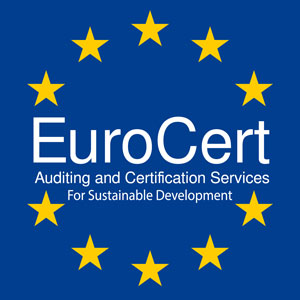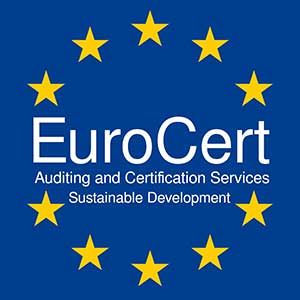Why Is Improving the Efficiency of Small Businesses So Challenging?
Since Donald Trump’s victory in last month’s presidential election, there has been much speculation about the future of the United States’ progress toward its Paris climate commitments. Many voices have highlighted the expected leadership role of private-sector investment in the continued growth of clean technology markets.
One such opportunity for the private sector is energy-efficiency investments in and by the nation’s small businesses. According to a 2013 report by the Preservation Green Lab, the energy efficiency potential of the 7 million small businesses in U.S. small commercial buildings is enormous: savings of 1.07 quadrillion Btu (British thermal units) of site energy, or more than $30 billion annually. Some small-business types, such as food service providers, have among the highest energy intensities of any building type, and could realize significant increases in their profit margins even with modest increases in their energy efficiency.
Despite the massive potential to both strengthen our small-business community and progress toward our climate commitments, there are significant challenges, both for small-business owners and for efficiency-as-a-service providers, to realize this market opportunity.
Barriers for small-business owners
Small-business owners often do not have the expertise, time, or capital to invest in efficiency measures for their business. Although energy use can account for up to 20 percent of the expenditures of a small business, many business owners do not have the expertise themselves or within their staff to identify and manage energy savings projects. The staff of a small business is typically focused on the core service of the business, and energy efficiency is rarely a priority among competing demands for their time. Finally, small businesses can have slim profit margins and poor cash flow, which makes it difficult to invest in — or finance — costly efficiency upgrades.
Several organizations are working with small businesses to address the knowledge and time barriers.
White Papers
Good Neighbors on the Grid: Large-Scale Solar, Utilities, and Customers
DOWNLOAD NOW
Guide to Back Up Power: Considerations for Energy Storage Assets
DOWNLOAD NOW
The nonprofit Green Impact Campaign (GIC) uses student volunteers to provide small-business owners with free energy audits and efficiency recommendations. Although this approach does not completely overcome the time or capital constraints, GIC’s recommendations and support help business owners figure out where to start, which can save small businesses that follow through up to 30 percent on their energy bills.
In addition, many utilities offer free energy audits, rebates and incentives, and even free installation of energy conservation measures to small businesses. Some of these programs can have time-intensive application and rebate processes, however, and without a utility that understands the niche needs of small businesses, some projects can leave business owners feeling frustrated. For example, a utility that switches all of a restaurant’s existing lighting with LEDs without considering the color temperature, brightness or dimmability of the lamps, can ruin the restaurant’s ambience.
Barriers to profitability in the small-business efficiency market
Making efficiency-as-a-service profitable in the small-business market is another significant challenge, this time for ESCOs and energy financing providers.
Many ESCOs have tried to apply the model they know best — managing large commercial and industrial efficiency projects — to the small-business sector, even though many small businesses are more similar to residential customers than large commercial customers. The large overhead costs and long customer lifecycle required to design, negotiate and finance large commercial projects is incompatible with the smaller returns to be earned from each small-business customer.
Because of that issue, Sparkfund, a DC-based efficiency fintech startup, no longer offers loan and lease financing to projects under $50,000. Earlier this year, however, the company started supporting projects as small as $10,000 with their efficiency-as-a-service model, which they found to be better suited to small businesses than traditional project financing. Pier LaFarge, SparkFund CEO, explained that efficiency-as-a-service “simplifies the customer’s decision to access new equipment without the expertise, time burden, or risk required of a cash purchase or loan.” For the ESCO, this model means longer-term relationships and revenue from a given customer, overcoming the key challenges to achieving profitability when serving small business customers.
One of the challenges to earning higher returns is the fact that many small businesses do not own their spaces, and thus do not have control over all of the high-return upgrades to the building envelope and HVAC systems. There are, however, opportunities to improve the efficiency of loads that do not require modification to the building, such as lighting, refrigeration and ventilation controls.
While the smaller size and reduced complexity of these small-business efficiency projects could reduce the costs of designing and negotiating projects, small businesses occupy a heterogeneous stock of buildings that can have a variety of boutique needs, which require a more customized approach to each project.
Financing projects in a way that is optimal to both a small-business owner and a financing provider can also be challenging. The most attractive financing for small business owners would be savings-backed arrangements, such as efficiency services agreements, which do not require upfront capital or loan service payments that cut into their already-slim profit margins.
Making savings-backed financing work depends on accurate measurement and verification (M&V) of savings. Getting small-business owners to share utility data can be challenging, due to unorganized record-keeping, fear of being criticized for poor energy management, or a simple lack of trust. Emerging low-cost submetering technology, like solutions from Panoramic Power and Persistent Efficiency’s Power Patch, could enable accurate tracking of realized savings.
Even if these challenges can be overcome, underwriting the risks of long-term savings-backed financing can be difficult for financiers. The longer financing term can be tricky since small businesses have a fairly high failure rate (especially when just starting out), and the financing term cannot exceed the length of the property lease of the business. For the same reasons that M&V can be challenging, obtaining the business records needed to accurately evaluate risks can be a major barrier to the project’s success.
Solutions for small businesses?
Despite all of the barriers, there are still opportunities to unlock the energy efficiency of small businesses. Some ESCOs, such as Maryland-based Greenavise, are taking a targeted approach, focusing on a specific small-business segment, such as restaurants, or a specific suite of energy conservation measures, such as lighting, refrigeration and web-based controls.
Public or quasi-public institutions, such as green banks or sustainable energy utilities, could also explore the deployment of savings-backed financing instruments to help overcome the financial barriers for small businesses to invest in efficiency.
Whatever solution emerges, it will require collaboration between financing providers, energy contractors and auditors. Utilities will also need to educate small business owners about efficiency opportunities and manage projects in a streamlined and tailored way, at little or no additional cost to business owners.
With potential energy savings totaling more than $30 billion per year, the opportunity for small businesses is too big to ignore.
***
Greg Miller is the sustainability coordinator for Georgetown University in Washington, D.C. and a fellow with the Clean Energy Leadership Institute.
This article was corrected to note that Sparkfund does offer a financing solution for efficiency projects as small as $10,000 through it’s as-a-service model, but does not offer loans and leases to projects that size. A previous version of the story said that Sparkfund no longer offers any financing to projects as small as $10,000




